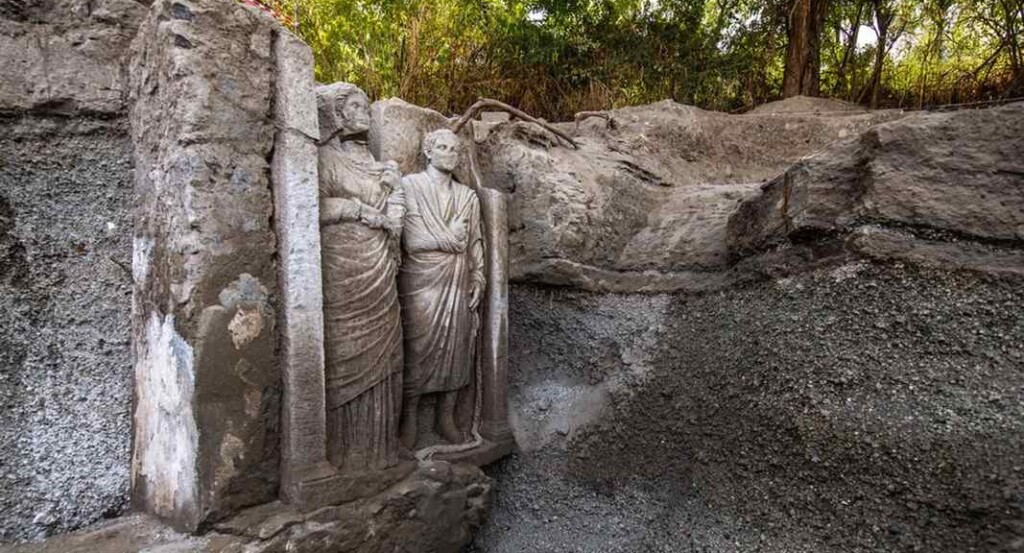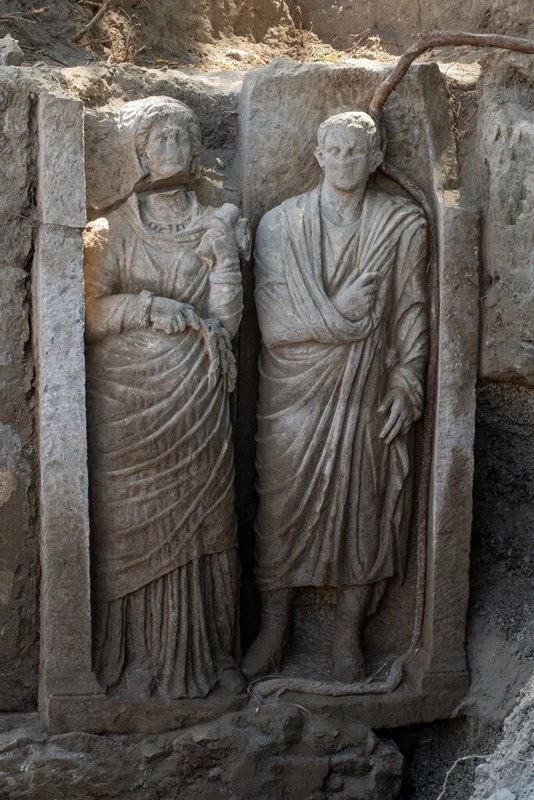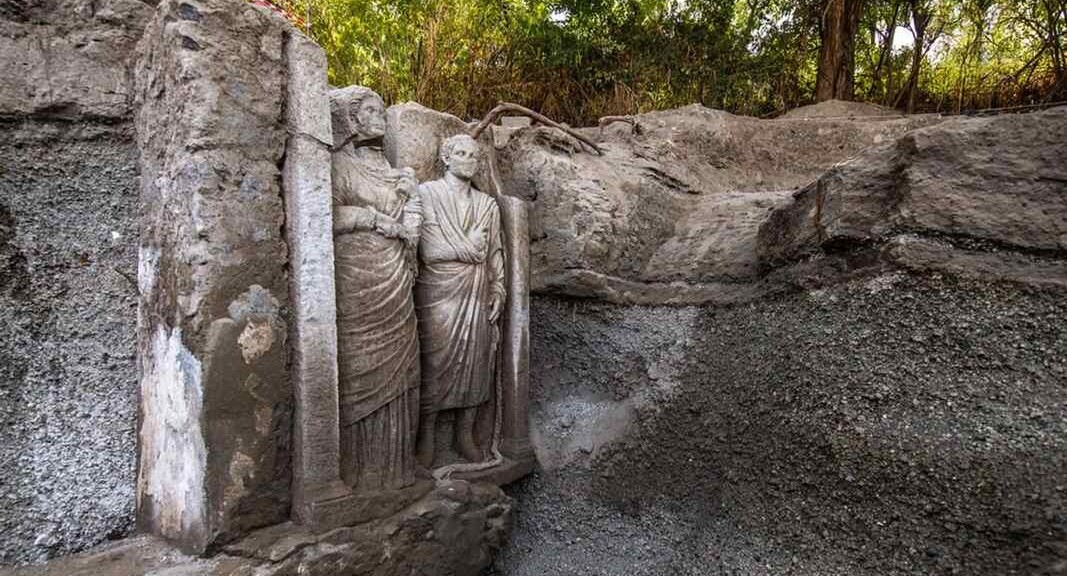
Later this month, an exhibition will open at the Archaeological Museum of Pompeii where a brand-new discovery will play a starring role in communicating the lives of women in the Roman world’s famous buried city.
Found mounted against a wall inside a necropolis near Porta Sarno, one of Pompeii’s city gates, the statues of a man and a priestly woman have emerged from the ash in remarkable condition.

Flanking a carved niche where a funerary urn once sat, the male statue is wearing a toga and is rather simple, while the woman is bedecked in accessories around her cloak and tunic.
The area they were found in had been excavated for the archaeological park railway in 1998, when the presence of 50 cremation burials in the necropolis was recorded. However, these statues remained hidden until July of last year.
The man and woman could be a married couple, but without an inscription it’s impossible to know for sure. They were carved during the 1st or 2nd century BCE, known as the Late Republican period.
The woman sports amphorae-shaped earings, a wedding ring, a bracelet, and an amulet carved in the shape of a crescent moon, a Roman maiden’s traditional decoration before marriage, called a lunula.
In her right hand, the female figure holds laurel leaves, which Roman priestesses and priests once used to purify spaces, and has led the researchers to believe the figure was in fact a priestess—of Ceres, perhaps, since this goddess of fertility, harvests, and motherhood was connected with the Moon.
Being that a lunula was typically worn before marriage, but the figure also wears a wedding band, the Moon-shaped amulet very well could be connected to Ceres’ role in guiding farmers through planting and harvests.
“There is also this idea that she could have been a priestess of Ceres, holding these plants and what appears to be a papyrus roll,” Gabriel Zuchtriegel, the park’s director, told the Guardian referring to a cylinder-shaped object in the statue’s left hand.
MORE POMPEII DISCOVERIES:
- Latest Digging from Pompeii Turns Up Large Private Spa Built to Spoil Wealthy Visitors
- Tiny House with Elaborate Frescoes of Mythical Scenes Unearthed From the Ashes at Pompeii
- 2,000-Year-old Scroll Burnt in Pompeii Decoded and Read for First Time by Three Genius Students
Smithsonian’s Sonja Anderson writes that the funerary reliefs’ age and quality alone make them rare finds. However, the fact that the female figure may represent a priestess holding religious objects makes the discovery exceptional.
She is set to star alongside other discoveries in an April 16th exhibit “Being a Woman in Ancient Pompeii” which explores the social fabric of maidenhood, motherhood, and the priestess class in the famous city.
SHARE Yet Another Fantastic Discovery From The Famous Ancient City…




















